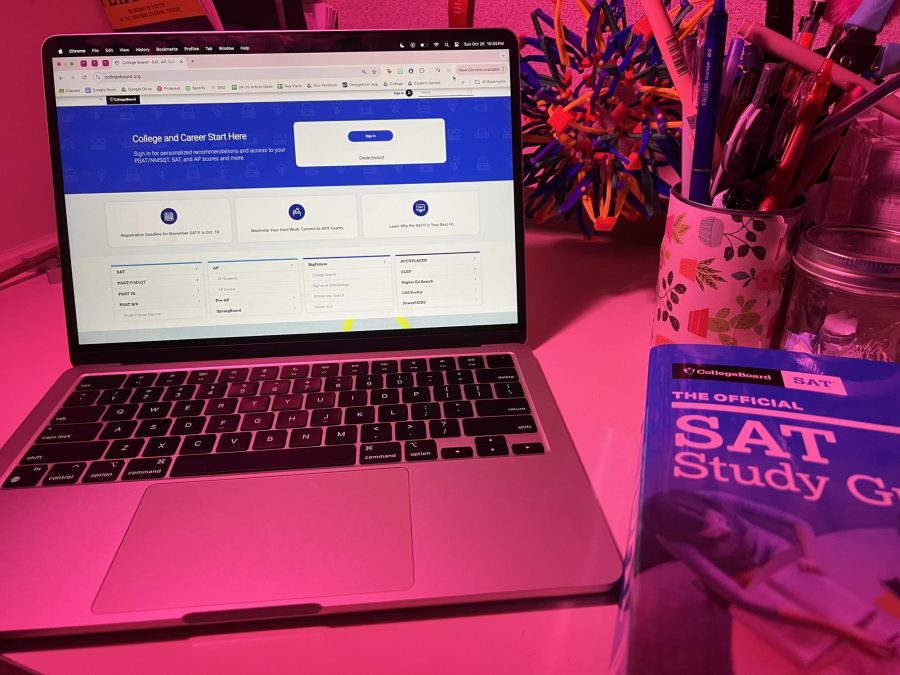As a kid, I always dreamed big. From going to an Ivy League university to becoming a neurosurgeon, nothing could get in my way. However, when I got to high school, those dreams started taking hit after hit. Its first attacker? Every small fee that I had to pay to get to higher education, before even applying to universities.
With success being defined today as a college degree, big-shot job title, and immense wealth, the pressure to lay the blueprint to achieve this starts as early as high school. However, every aspect of achieving this type of success comes with a heavy price tag. As students feel the need to perfect every part of their college applications from scoring well on standardized tests to maintaining good grades in difficult classes, the financial costs of it all adds a complicated layer of stress and confusion.
The highest level course available at WA is Advanced Placement (AP) courses offered through College Board. There are many benefits that come with taking AP courses, from college credit to GPA boosts. However, the burdening cost of $108 per test is an unnecessarily high price for students who simply want to be academically challenged, especially for students who take multiple AP classes throughout junior and senior year, as the total can be hundreds of dollars in exam fees alone. Though WA offers financial aid for the exam to students who qualify for free/reduced lunch, it is just a $37 fee reduction.
According to College Board, nearly 1.2 million students in the US in the class of 2023 alone took over 4.1 million AP Exams. With each student paying about $108, varying based on students receiving fee reductions, for each AP exam, College Board would make around $400 million, not even counting international students. If these institutions lowered their prices to even $30 per exam, they would still be making well over $120 million in just AP exam fees.
For students who wish to take the SAT or the ACT it can cost students $68 and $65 respectively per test. For those who wish to take the ACT with the writing section, the price increases up to $85. College Board reports that 55% of students are able to improve their score by retaking the test. Most students take these tests at least twice to achieve their desired score, and the costs add up in the blink of an eye.
While this price may not seem too bad at first, an unnecessary cost is added when submitting scores to colleges. Both the SAT and ACT allow students to send test scores to four colleges for free, however after that, it costs $14 per SAT score submitted and $18.50 per ACT score submitted. As most students apply to around 10-15 schools, this cost can come out to upwards of $110.
However, the real question is, what is the necessity of paying to send scores to schools? For students to have to pay to take the test and other fees, to then have to also pay to send scores to colleges is needlessly expensive. With many schools reinstating the requirement for applicants to submit test scores, this becomes an unavoidable issue.
College Board reportedly holds over $1.57 billion that can be used to finance any activity they want relating to the company. After all the expenses of paying for salaries, exam materials, scoring, College Board keeps 4 to 13 of every 100 dollars it takes in. This ambiguity of what these institutions are doing with our money is not fair to the students who pay them thousands of dollars. There needs to be more transparency if they want to justify all of the costs.

Though the goal for both the SAT and ACT is to showcase the readiness of a student for college, these scores not only showcase the economic disparities in students but also racial inequalities. The average math scores of all SAT test takers in the US is 511 out of 800, however the mean scores for black (428) and latino (457) students is significantly lower than those of white (534) and Asian (598) students. These race gaps in test scores can also reflect race gaps in income and wealth.

“I understand that they need money, maybe to fund their exams and to ensure that they stay open, but I don’t understand why it has to be so much,” senior Veronica Vidoli said. “Especially if people struggle financially, who’s going to pay for their exams? […] It’s too much, especially because people are so financially diverse, it’s just not considerate of everybody.”
Both the College Board and ACT offer fee waivers to low income students, based on very specific rules of eligibility. However, standardized test scores still directly correlate with the resources of the applicant’s family, due to more affluent families having the ability to pay for prep courses, private tutors, and other educational environments. Additionally, some families even cheat on these tests, such as finding psychologists to give their children false diagnosis to receive accommodations such as extra time. Students’ ability to continue their academic journeys should not be solely reserved for affluent families who can afford to pay for all of the fees and resources along the way.

It is imperative for these supposedly non-profit and not-for-profit institutions to reevaluate if they are pursuing their mission statements of setting students up for success in higher education. With these enormous fees, students are being burdened under financial pressure before even applying to colleges. These institutions need to remember they are meant to keep students at the forefront, not their self-interests.
With today’s students already burdened under the pressures of colleges dramatically increasing their yearly tuitions, the last thing on our minds should be the financial stress due to wanting to academically challenge ourselves.









Megan Eckroth • Oct 27, 2024 at 8:46 pm
Great article Saanvi, well done!